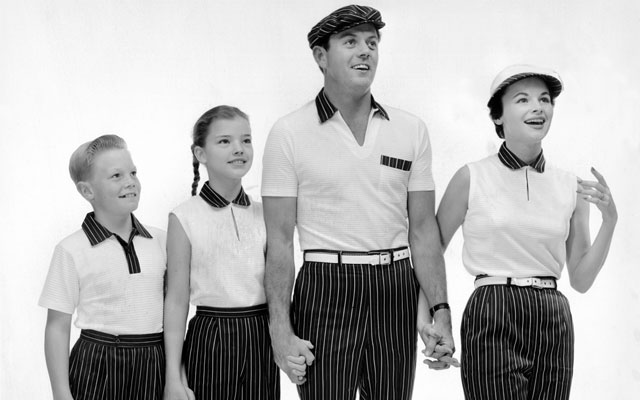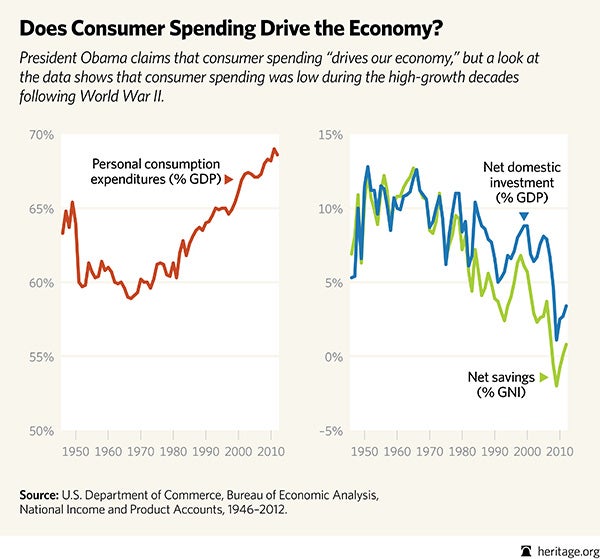The Left’s Misplaced Nostalgia Debunked in One Chart
Salim Furth /
In a throwback to the economic policy and theory of the 1950s, President Obama in a recent speech blamed the rich for concentrating wealth and spending too little on consumption:
Concentrated wealth at the top is less likely to result in the kind of broadly based consumer spending that drives our economy.
The President apparently believes that consumer spending, rather than savings and investment, drives economic growth. But, as this chart shows, personal consumption is at a post-war high as a share of national expenditure. If consumer spending really did drive the economy, it would be booming.
All that consumption comes at the expense of net investment, which shows a clear downward trend since the 1950s. Net savings tracks investment closely.
It’s probably true that, all else equal, rising income inequality lowers consumption a little. Clearly, therefore, income inequality is not causing these major trends: There are much stronger forces in the economy. The President’s theory does not account for the basic macroeconomic facts.
Nor do we know, as the President asserted, “that beyond a certain level of inequality, growth actually slows altogether.” In fact, the evidence of any connection between growth and inequality is so weak that Jared Bernstein, Vice President Biden’s former chief economic adviser, concluded in a paper that “research on inequality’s impact on growth remains inconclusive” and is based on “[i]ntuitive connections, backed by circumstantial trends.” It is irresponsible for the President to present an unproven hypothesis as settled science.
Then there is President Obama’s confusing vision of socioeconomic mobility. He said of the era between World War II and the late 1970s, “[F]or some, that meant following in your old man’s footsteps at the local plant.” That is the exact opposite of mobility. And, as the President acknowledged, non-whites were “locked out” of most of these easy-to-get, high-paying jobs.
A few sentences later, the President disowned the dreams of the footstep-followers: “And because of upward mobility, the guy on the factory floor could picture his kid running the company some day.”
This would not have been true for the factory worker’s daughter: Women rarely managed companies before the late 1970s when “this social compact began to unravel” and white men started to face serious competition from women and non-whites.
As government-supported racial segregation was broken down, women entered traditionally male professions, and millions of young baby boomers entered the labor force, there was much more competition in labor markets. Making money is harder in a market with more competitors.
Fortunately, competition in the American economy is fairer, more open, and more dynamic than it was during the “three decades after World War II.” While too many are still denied opportunity by the accident of being born into the wrong school district, they are far fewer than those who were consigned to manual labor or “women’s work” by the old social compact.
The President wants to have it both ways, lauding “the painstaking struggle” through which “more women, minorities, and Americans with disabilities began to win the right to more fairly and fully participate in the economy,” while mourning the unraveling of the social compact. Which is it? An economy that delivers easy breadwinner status to insiders or an economy that allows everyone to compete on equal footing?


